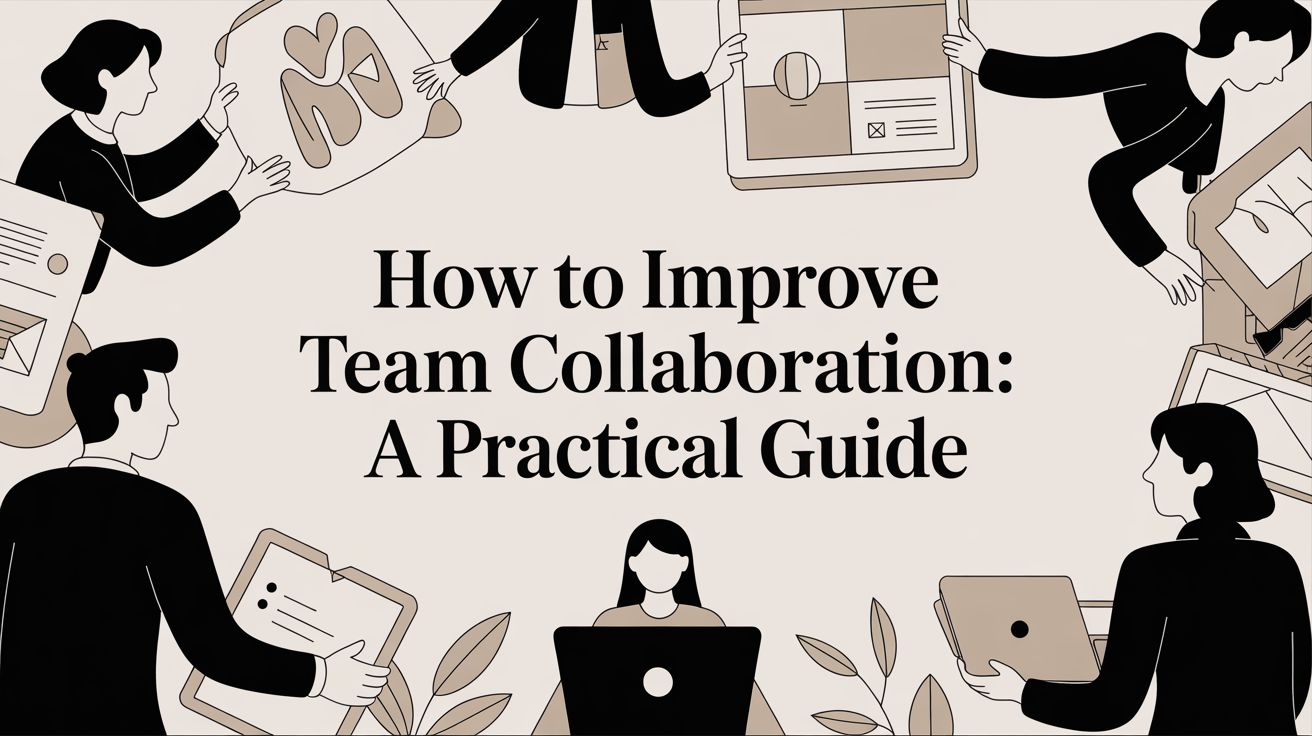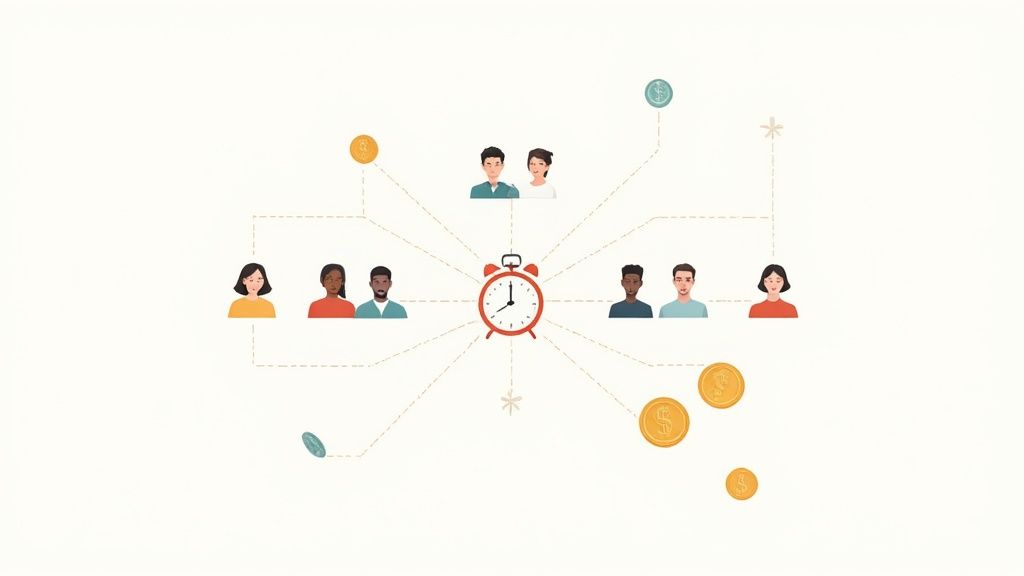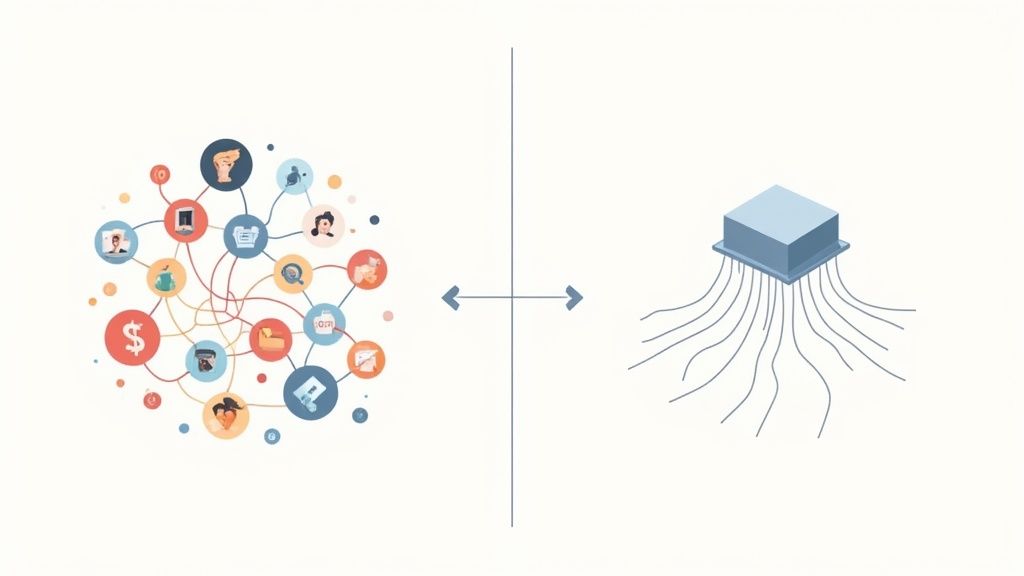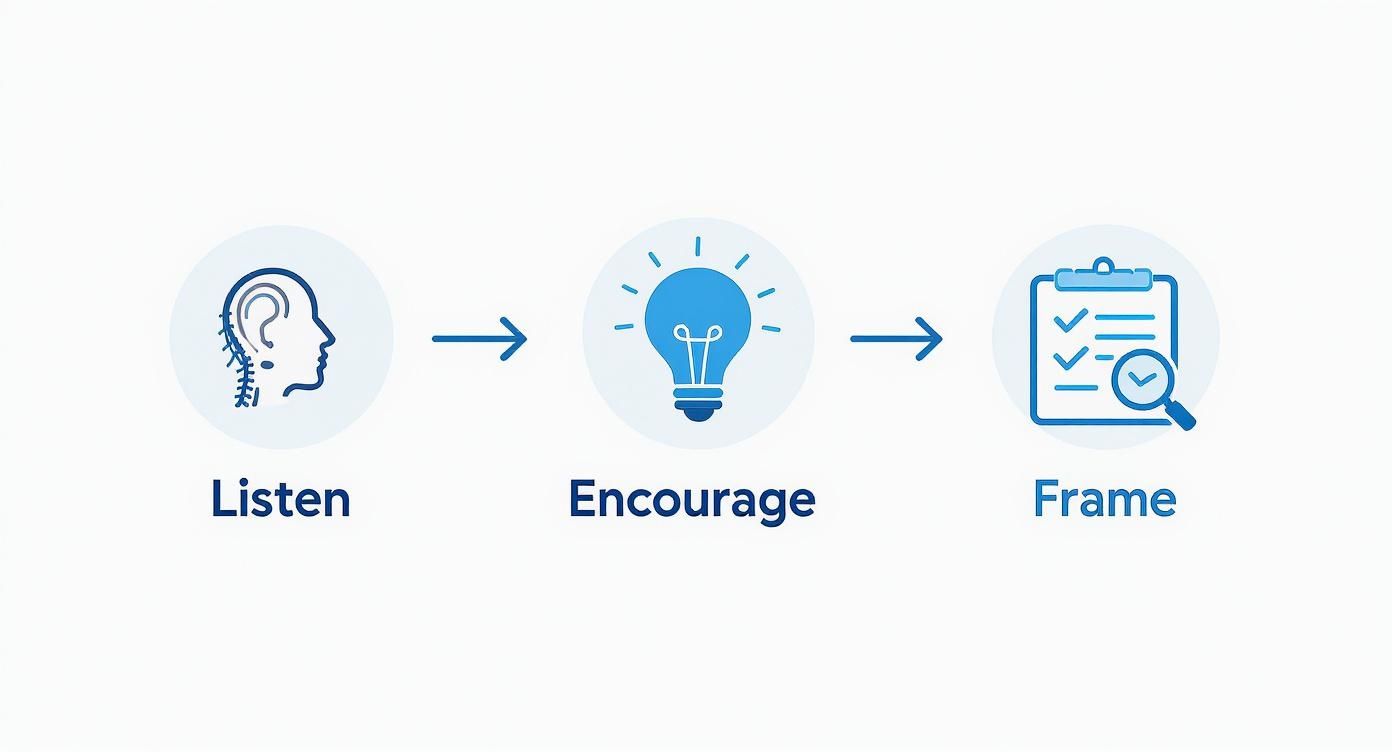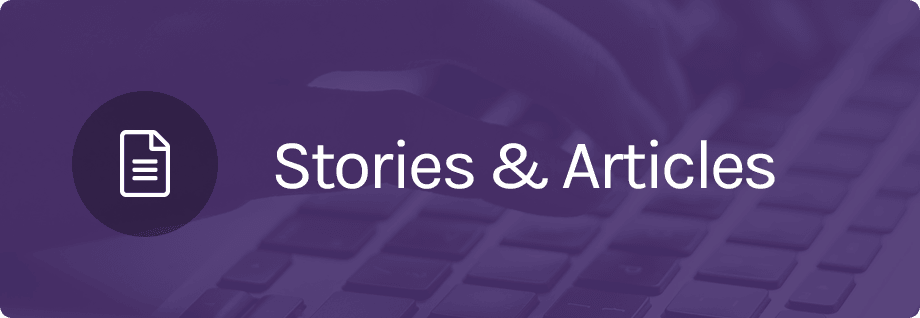Great collaboration doesn't just happen by accident. It's the result of a deliberate system built on clear communication, a shared sense of purpose, and the right technology to back it all up. When you get it right, you transform disjointed, individual efforts into a unified force that genuinely boosts productivity and ensures projects hit the mark. The goal is to create an environment where information flows like water and everyone knows exactly how their piece fits into the larger puzzle.
The True Cost of Poor Team Collaboration
Before we jump into the "how-to," let's get real about what's at stake. Poor collaboration isn’t just a minor annoyance that makes workdays longer. It's a silent killer of resources, morale, and results, creating friction that grinds progress to a halt and turns straightforward tasks into monumental challenges.
When teams are siloed, information gets trapped, work gets duplicated, and deadlines become suggestions rather than commitments. We've all seen it: the marketing team launches a huge campaign for a new feature, only to find out engineering delayed the release weeks ago. That’s not just a miscommunication; it’s a colossal waste of budget, time, and energy, all stemming from a lack of cohesive teamwork.
Connecting Friction to Business Impact
The tangible fallout from this kind of disconnect is severe. Think about the financial drain of projects that need constant rework because key stakeholders weren't on the same page from day one. Or consider the innovation that never sees the light of day because talented people don't feel comfortable sharing new ideas, either from fear of criticism or because there's no clear way to even suggest them.
These problems snowball, breeding a culture of frustration and disengagement that's hard to reverse. The data paints a stark picture: a report from Fierce Inc. found that a massive 86% of employees and executives blame a lack of collaboration or ineffective communication for workplace failures. What’s more, 97% believe this misalignment directly torpedoes the outcome of a task or project.
Poor collaboration is a tax on every project. It silently increases costs, extends timelines, and diminishes the quality of the final output, turning potential wins into frustrating losses.
To help you get started, here’s a quick-glance table to identify common symptoms of poor collaboration and some immediate steps you can take.
Symptoms of Poor Collaboration and First Steps
| Common Symptom | Potential Impact | First Corrective Action |
|---|---|---|
| Missed deadlines and constant "fire drills" | Project delays, decreased quality, team burnout. | Implement a shared project timeline (e.g., in Asana or Jira) and hold brief daily stand-ups to track progress. |
| Different teams have conflicting information | Wasted effort, rework, customer confusion. | Establish a single source of truth for key project documents (e.g., a shared Notion page or Confluence space). |
| Low engagement in meetings | Poor decision-making, lack of buy-in, stalled progress. | Send out a clear agenda with desired outcomes beforehand and assign action items with owners at the end of every meeting. |
| "That's not my job" mentality | Innovation stalls, processes break down, morale drops. | Clarify roles and responsibilities using a RACI chart for a key project. Reinforce shared team goals in all-hands meetings. |
This table is a starting point. Real, sustainable improvement requires a deeper, more structural approach.
The Foundational Pillars of Success
If you want to build a truly high-performing team, you have to nail three core pillars. Think of them as the legs of a stool—if one is weak, the whole thing topples over.
- Clear Communication: This is so much more than just talking. It’s about having dedicated channels for specific conversations (e.g., Slack for quick chats, email for formal updates), ensuring everyone can easily find the information they need, and building a culture where asking questions is seen as a strength, not a weakness.
- Shared Purpose: People do their best work when they understand the "why." When every person on your team can draw a straight line from their daily tasks to the company's biggest goals, their motivation and alignment skyrocket.
- Supportive Tech Stack: The right tools should feel like they're helping, not getting in the way. A well-integrated tech stack unifies workflows, automates the tedious stuff, and gives everyone a single, reliable source of truth to work from.
Focusing on these three areas doesn't just put out today's fires; it builds a more resilient, agile, and efficient organization for the long haul. It's the first and most critical move toward genuinely improving operational efficiency across your entire business. Now, let’s get into the playbook for diagnosing your team’s specific pain points and putting lasting solutions in place.
Pinpointing Your Team's Collaboration Gaps
Before you can fix a problem, you have to truly understand it. Jumping straight to solutions without a solid diagnosis is a classic misstep. You might feel busy, but you won't end up where you need to be. To really improve how your team works together, you first need to get your hands dirty and find the specific friction points, bottlenecks, and crossed wires holding everyone back. This isn't about vague assumptions; it's about digging into the reality of how work actually gets done day-to-day.
The best place to start? By gathering honest, unfiltered feedback. I've found that people on the ground usually have a gut feeling about what's broken, but they need the right forum to share it. Casual chats by the coffee machine aren't enough—you need a structured way to create a safe space for candor.
Moving Beyond Assumptions with Direct Feedback
Assumptions are the enemy of effective problem-solving. You might think the big issue is tool overload, but your team could be struggling with a fundamental lack of clarity around roles. The only way to know for sure is to ask them, directly and systematically.
I've had the most success with two methods: structured retrospectives and anonymous surveys. They work together to give you the full picture.
-
Structured Team Retrospectives: These aren't just gripe sessions. A well-run retro is a facilitated meeting where the team reflects on a recent project or sprint. The goal is to identify what went well, what was a struggle, and what we should change next time. The secret is to keep the focus on the process, not the people.
-
Anonymous Surveys: Retrospectives are fantastic for open discussion, but some feedback is just too sensitive to share in a group setting. Anonymous surveys give people the psychological safety they need to be brutally honest about deeper issues—things like a lack of trust in leadership or simmering interpersonal conflicts that are quietly torpedoing progress.
The goal isn't just to collect opinions; it's to gather data. Treat this feedback as a critical dataset. It's what will reveal the patterns, validate your hunches, and point you toward the real root cause of your collaboration headaches.
For instance, a survey might reveal that 70% of the team feels project handoffs are a mess. That’s a concrete data point you can sink your teeth into—so much more powerful than a vague feeling that "communication could be better."
When you build your survey, be sure to include a mix of question types to cover all your bases.
Sample Survey Questions to Uncover Gaps
| Question Type | Sample Question | What It Reveals |
|---|---|---|
| Process-Oriented | On a scale of 1-5, how clear are your project priorities on a weekly basis? | Clarity of goals and task alignment. |
| Tool-Focused | Do you feel our current tools help or hinder your ability to collaborate effectively? Please explain. | Tech stack effectiveness and potential tool overload. |
| Culture-Based | Do you feel comfortable voicing a dissenting opinion or admitting a mistake to the team? | Levels of psychological safety and trust. |
| Role Clarity | How confident are you about who is responsible for what on your current projects? | Effectiveness of role definition and ownership. |
Analyzing Your Digital Footprint
The other side of the coin is objective data. While surveys tell you how people feel, your team’s digital footprint shows you what they actually do. This is where you can spot the real-world bottlenecks and communication black holes hiding in your workflows.
Start by mapping out your primary communication flows. For any given project, ask yourself: Where does the initial brief live? Where do the follow-up discussions happen? And where are final decisions and approvals documented? If the answer is a messy trail of emails, Slack DMs, and random project management comments, you’ve just found a major collaboration gap.
For a more structured way to approach this, our guide on IT project management best practices offers some excellent frameworks that can help bring order to that chaos.
This kind of analysis shows you precisely where information gets lost, siloed, or delayed. Maybe you notice that tasks assigned over email consistently take twice as long to get done as those logged in your project management tool. That’s not a failing of your team; it’s a process failure that the data has just exposed.
By combining this objective, digital-trail analysis with the subjective feedback from your team, you get a complete, 360-degree view of your collaboration health. This is the foundation you need. With a clear diagnosis in hand, you can finally start making changes that will have a real, lasting impact.
Establishing Clear Communication and Shared Goals
Once you’ve diagnosed where your collaboration is breaking down, the next step is to build a foundation that keeps those cracks from reappearing. At the end of the day, great teamwork boils down to two things: everyone knows what’s going on, and everyone is pulling in the same direction.
Without that basic alignment, even the most brilliant teams will trip over their own feet, slowed down by preventable misunderstandings and conflicting priorities. Collaboration doesn't happen by magic; it's engineered. You have to be intentional about creating systems for communication and goal setting that bring clarity to the chaos.
Architecting Your Communication Channels
Most teams today don't have a shortage of tools—they have a shortage of rules. A recent Gensler study found that even though office workers spend 42% of their time collaborating, communication is still a major hurdle. It gets worse with more tools. Employees using over 10 different apps reported a 54% rate of communication issues, a huge jump from the 34% among those using fewer than five.
The lesson here is clear: more tech doesn't equal better communication. You can dive deeper into these workplace collaboration insights to see the full picture.
The fix is to create a simple communication charter. This isn't about adding bureaucracy; it’s about reducing the mental energy your team wastes just trying to figure out where to say what.
Here’s what a practical charter might look like:
- Slack/Microsoft Teams: This is your digital tap on the shoulder. Use it for urgent questions, quick check-ins, and informal chatter.
- Email: Keep this for the formal stuff—official announcements, client communication, and documenting big decisions that need a paper trail.
- Project Management Tool (e.g., OpsHub, Asana): This is your single source of truth. All task-specific questions, updates, files, and feedback live here, directly tied to the work itself.
- Video Calls (e.g., Zoom, Google Meet): Reserve these for complex problem-solving, strategic planning, or any conversation that needs the nuance of face-to-face interaction.
By defining these lanes, you kill the guesswork. No more digging through a dozen emails for a file someone dropped in a random Slack channel. It’s a simple change that pays huge dividends in efficiency and sanity.
Unifying the Team with Shared Goals
Clear channels get everyone on the same page, but shared goals make sure they’re all reading the same book. Nothing fuels motivation like seeing exactly how your daily grind contributes to the company's biggest objectives. It transforms work from a checklist of tasks into a meaningful mission.
One of the best frameworks I've seen for this is Objectives and Key Results (OKRs). It’s a straightforward way to set, communicate, and track goals across the entire organization.
OKRs aren't just a fancy to-do list. They are a framework for alignment, creating a visible, unbroken line from the company's highest strategic priorities down to the specific, measurable work of every person on the team.
This is how they work:
- Objective: This is your big, ambitious goal. It’s qualitative and answers, "What do we want to accomplish?" For example: "Launch a Seamless New Patient Onboarding Experience."
- Key Results: These are the numbers that prove you hit your objective. They're quantitative and answer, "How will we know we did it?" For the objective above, your KRs might be:
- Reduce patient form completion time by 30%.
- Achieve a 95% patient satisfaction score for the new process.
- Decrease onboarding-related support tickets by 50%.
When you implement a framework like OKRs, you translate abstract vision into concrete action. It gives everyone a shared language for success, whether they're in IT deploying a new system or on the grant writing team chasing funding targets. With that kind of transparency, teams can make smarter decisions on their own because they finally see the bigger picture they're helping to build.
Choosing Collaboration Tools Without Creating Overload
The right tools can feel like a superpower, turning chaotic projects into well-oiled machines. The wrong ones—or just too many of them—create digital friction, slowing teams down and burying important work under a mountain of notifications.
Building a tech stack that actually helps isn’t about collecting the latest shiny apps. It’s about thoughtfully curating a lean, integrated ecosystem that fits how your team truly works. Often, the best first step is subtraction, not addition.
Conducting a Strategic Tool Audit
Many organizations I’ve worked with suffer from "app sprawl." Different teams adopt different tools over time, leading to multiple apps doing the exact same job. This redundancy is a silent killer of productivity and budget.
To get a handle on the chaos, you need to run a tool audit. This is more than just listing subscriptions; it's about understanding how each piece of software contributes to—or detracts from—your team's workflow. The goal is to spot and eliminate redundancies, consolidating your platforms so information can finally flow freely.
Start by mapping your core processes: project management, internal communication, client interaction, and documentation. Then, list every single tool currently used for these functions.
The overlaps can be surprising. For example, your grant writers might track deadlines in a spreadsheet, the clinical staff uses a dedicated task manager like Asana, and leadership communicates priorities in long email chains. That’s three systems for one function, creating information silos and making a unified view of progress impossible.
A cluttered tech stack is a cluttered workflow. By intentionally curating your tools, you're not just cutting costs—you're designing a more focused, efficient, and less stressful work environment for your entire team.
A Framework for Evaluating New Tools
Once you’ve trimmed the fat, you can think strategically about filling the gaps. When looking at a new tool, resist the allure of a long feature list and focus on a few core principles that ensure it will improve, not complicate, your work.
- Integration is Non-Negotiable: A new tool must play well with your existing systems. If it can't connect to your central project hub or communication platform, it will just create another information island.
- User Experience Matters Most: If a tool is clunky or unintuitive, your team won’t use it consistently, no matter how powerful it is. Always—and I mean always—involve the people who will actually use it in the evaluation process.
- Scalability for the Future: Choose tools that can grow with you. The needs of a five-person team are very different from a fifty-person organization. Make sure your chosen platform can support that evolution.
To make this process more concrete, here's a checklist you can use to grade potential tools against your actual needs. It helps move the conversation from "what's cool?" to "what will work?"
Collaboration Tool Evaluation Checklist
| Evaluation Criteria | Key Questions to Ask | Importance (High/Medium/Low) |
|---|---|---|
| Core Functionality | Does this tool solve the specific problem we identified? Does it do its primary job well? | High |
| Integration Capability | Can it connect seamlessly with our existing critical systems (e.g., CRM, project manager)? | High |
| User Experience (UX) | Is the interface intuitive? How steep is the learning curve for our team? | High |
| Team Adoption | Did the end-users who tested it actually like using it? What was their feedback? | High |
| Scalability | Can this tool support our team's projected growth over the next 1-3 years? | Medium |
| Security & Compliance | Does it meet our industry's security standards and data privacy requirements? | High |
| Cost & ROI | What is the total cost of ownership (TCO)? Does the potential productivity gain justify it? | Medium |
| Support & Training | What level of customer support is offered? Are there adequate training resources available? | Medium |
| Reporting & Analytics | Can we get the data and insights we need from this tool to measure its impact? | Low |
By systematically running through these questions, you can make a much more informed decision that benefits the entire organization, not just one department. You can find more ideas on what to look for in our guide on essential communication tools for remote teams, which dives deeper into features that foster clarity.
Leveraging Automation to Reclaim Focus
A well-chosen tech stack doesn't just connect workflows; it automates them. Routine, manual tasks are a major drain on your team's most valuable resource: their focus. Every minute spent manually generating a report or sending a reminder is a minute not spent on creative, strategic work.
This is where AI is becoming incredibly useful, handling things like scheduling, document management, and even work allocation. Modern tools can analyze team availability across time zones to find the best meeting time or even flag project risks before they become real problems.
Consider these practical automation opportunities:
- Automated Status Updates: Instead of daily stand-ups, configure your project management tool (like Jira or Trello) to post a summary of completed and upcoming tasks to a Slack channel each morning.
- Intelligent Task Routing: Set up rules to automatically assign incoming support tickets or requests to the right person based on keywords, eliminating the manual triage bottleneck.
- Cross-Platform Syncing: Use a platform like OpsHub to ensure that when a task is updated in one tool, it automatically updates a master tracker in another. This keeps stakeholders in the loop without anyone having to copy and paste a thing.
By thoughtfully selecting and integrating your tools, you can build a tech stack that serves as a calm, unified command center. This approach transforms technology from a source of distraction into a powerful engine for truly effective collaboration.
Building a Culture of Psychological Safety
You can have the best tech and the most streamlined processes in the world, but they're just scaffolding. The real structure of great teamwork is built on trust. True, sustainable collaboration only kicks in when people feel safe—safe enough to toss out a wild idea, to question the way things have always been done, or even to admit they messed up.
This is the heart of psychological safety. Honestly, it's the single most critical ingredient for unlocking a team's potential to solve tough problems and create something new.
Without it, you get a culture of silence. You'll have team members with brilliant insights, people who can see a project is about to go off the rails, but they'll stay quiet. Why? To avoid looking foolish or starting a conflict. This isn't just a "soft" people problem; it's a direct threat to your bottom line.
Leading with Vulnerability and Curiosity
Psychological safety starts at the top. As a leader, your every action sets the tone. If you act like you have all the answers, your team will never dare to challenge you. But if you model vulnerability, you give them permission to be vulnerable, too.
Start by simply admitting what you don't know.
Phrases like, "That's a great question, I haven't thought about that angle," or, "I could be wrong here, what do you all think?" are incredibly powerful. They instantly shift the dynamic from a top-down directive to a collaborative hunt for the best path forward.
This directly tackles a huge issue I see all the time: people feeling like their input doesn't matter. A staggering 40% of workers say their leaders often fail to ask for input before making a decision. That's a massive gap. When you lead with genuine curiosity, you're actively inviting people in and showing you value the team's collective brainpower. You can dig into more of these teamwork statistics and their impact here.
A leader's job isn't to have all the answers. It's to create an environment where the answers can be found. That environment is built on a foundation of psychological safety, where curiosity is valued more than certainty.
Turning Failures into Learning Opportunities
How your team reacts to failure is the ultimate litmus test for psychological safety. When a mistake happens, is the first instinct to find someone to blame? Or is it to figure out what went wrong with the process so you can fix it for next time?
To build a team that's both resilient and innovative, you have to reframe what failure means. It's not a sign of incompetence; it's just what happens when you push boundaries. When something goes wrong, treat it like a source of invaluable data.
Here’s how to do that in the real world:
- Run Blameless Post-Mortems: After a project hits a snag, get the team together to walk through the sequence of events. The focus must be on "what happened?" and "how can we prevent this?"—never "who messed up?"
- Celebrate the Smart Risks: Publicly praise team members who tried something ambitious, even if it didn't pan out. This sends a clear message that the effort and the learning are what you truly value.
- Share Your Own Mistakes: I make it a point to talk about my own past failures and what I learned from them. It normalizes imperfection and makes it okay for others to be transparent about their own struggles.
Fostering Safety in Remote and Hybrid Teams
Keeping that sense of safety alive is even tougher when your team is spread out. You lose all the non-verbal cues and casual chats that naturally build trust. It's just harder to read the room.
To bridge that distance, you have to be much more intentional about creating connection and clarity.
- Prioritize Check-ins: Start meetings with a quick, non-work check-in. Just asking "How's everyone doing today?" can open the door for a real human connection.
- Assume Positive Intent: In a world of Slack messages and emails, it’s dangerously easy to misread tone. Make a team-wide agreement to always assume positive intent in writing and to hop on a quick call if something feels off.
- Create Multiple Ways to Give Feedback: Some people are great at speaking up on a video call, but others are better at collecting their thoughts in writing. Use shared docs, chat channels, and even anonymous polls to make sure every single person can contribute in the way that works best for them.
By consciously embedding these behaviors into your team's rhythm, you can shift the culture from one of fear and self-preservation to one of trust and open collaboration. This is how you stop being just a group of individuals and become a truly unified team.
Measuring and Refining Your Collaboration Strategy
So, you’ve put in the work to improve how your team collaborates. What now? Treating this as a "set it and forget it" project is a recipe for backsliding. True improvement comes from building a living process that requires ongoing attention and refinement.
To see if your efforts are actually paying off, you need to move beyond gut feelings and start measuring what matters. This is how you create a virtuous cycle of continuous improvement, where you can fine-tune your strategy based on tangible results.
A balanced approach here is key—you need both the hard numbers and the human story.
- Quantitative Metrics: These are the cold, hard facts that reveal changes in efficiency. Start tracking things like project completion rates, the average task cycle time, and your on-time delivery percentage. A noticeable drop in cycle time, for instance, is a fantastic indicator that you're successfully smashing collaboration bottlenecks.
- Qualitative Feedback: This is the human side of the coin. Use regular, brief pulse surveys and structured team retrospectives to get direct feedback from the source. You can ask pointed questions about role clarity, feelings of support, and communication effectiveness to really understand your team's day-to-day experience.
Establishing a Feedback Loop
Your main goal is to create a consistent feedback loop. This doesn’t mean piling on more meetings; it's about embedding reflection into your team's natural rhythm. A short, bi-weekly retrospective can be an incredibly powerful tool for making those small, iterative adjustments that stop larger issues from ever taking root.
Keep a close eye on employee engagement, too. It’s a critical health metric for any team. Gallup's 2024 report found that global employee engagement has stalled at just 23%, a sobering statistic. As collaboration gets better, engagement should naturally follow.
This simple process flow breaks down the core actions for leaders who want to build psychological safety—a cornerstone of great collaboration.
As you can see, fostering a truly collaborative environment often starts with the basics: active listening, encouraging new ideas, and reframing challenges as learning opportunities instead of failures.
If you want to streamline this whole feedback and refinement cycle, consider using automations to collect data and trigger follow-ups. Understanding what is workflow automation can give you practical ways to build these loops directly into the tools you already use, making continuous improvement an effortless part of how you operate.
Got Questions About Team Collaboration? We’ve Got Answers.
Even the best-laid plans for improving how your team works together can hit a few snags. It’s only natural for questions to pop up as you start making changes. Here are some straightforward answers to the challenges we see leaders and teams run up against most often.
What’s the Single Best First Step to Take?
Before you even think about a new tool or another recurring meeting, you need to diagnose your team’s specific pain points. This is, without a doubt, the most critical first move.
Start by talking to your people. You can use anonymous surveys or run a few structured retrospectives to get a real, unfiltered look at where the friction is. Is it tool overload? Are roles and responsibilities a constant source of confusion? Or is there a deeper issue with trust? You can't fix a problem you haven't accurately identified, and starting here ensures you're putting effort where it will actually make a difference.
How Do We Make This Work for a Hybrid Team?
With a hybrid team, you have to be incredibly intentional about your communication rules. You lose the luxury of spontaneous "water cooler" chats, so you have to build a system that works for everyone, regardless of where they are.
- Create a single source of truth: All project info, updates, and decisions should live in one central place, like your main project management tool. No more hunting through Slack, email, and documents.
- Default to async: For routine updates and status checks, asynchronous communication is your best friend. It respects everyone's time and focus. Save the real-time video calls for brainstorming and complex problem-solving where back-and-forth is essential.
- Build in social time: Schedule regular, informal video chats with no agenda. Let people connect as people. This is how you build the trust and personal bonds that make collaboration feel effortless.
A successful hybrid model is all about leveling the playing field. You have to consciously design a system where remote team members feel just as in the loop and valued as their in-office colleagues.
My Team Is Pushing Back on New Tools. What Now?
Resistance to change is human. It's usually not about the tool itself, but about the fear of disruption or a feeling that a change is being forced on them without context. The key to getting buy-in is to make them part of the solution.
First, be crystal clear about the why. Use the data you gathered from your diagnosis to show them the exact problem you're trying to solve. Then, instead of a top-down mandate, ask for volunteers to pilot the new tool or process. Let a small group kick the tires and give you their honest feedback. When people feel heard and involved in a decision, they're far more likely to champion the change rather than fight it.
Ready to unify your team's workflows and create a single source of truth? OpsHub is an AI-powered operations platform that brings your projects, tasks, and data into one calm command center, unlocking effortless productivity. Learn how OpsHub can transform your team collaboration.

